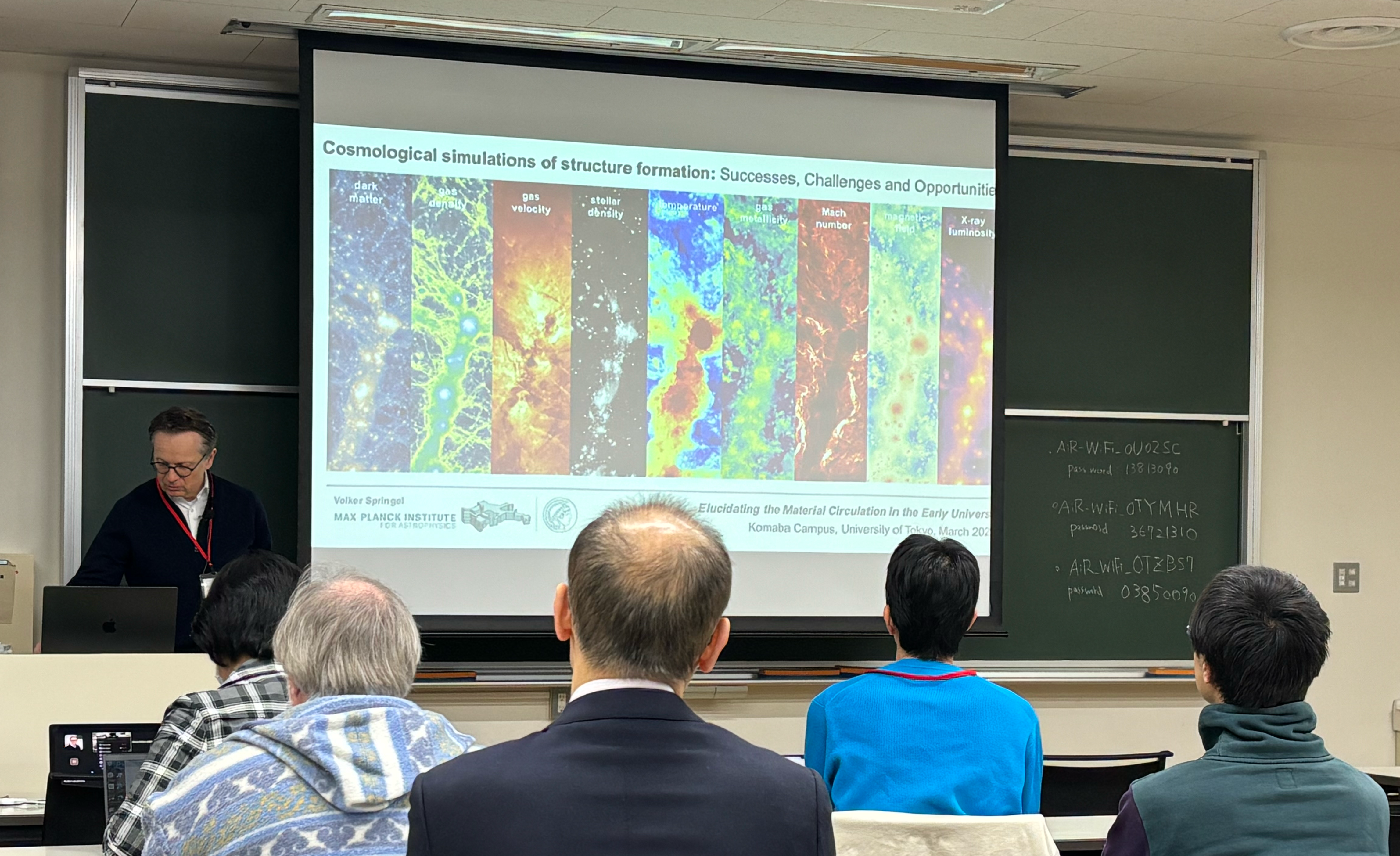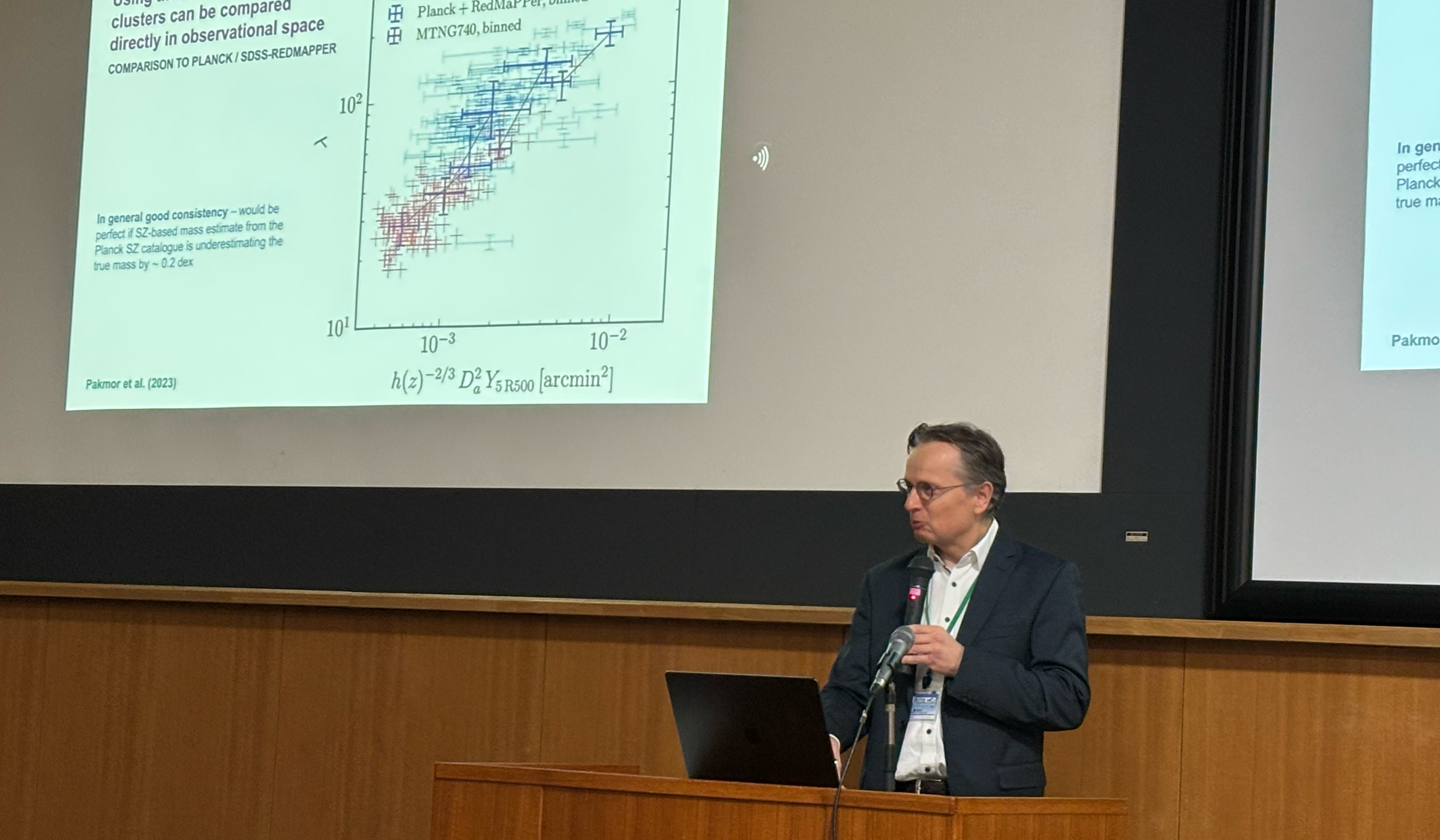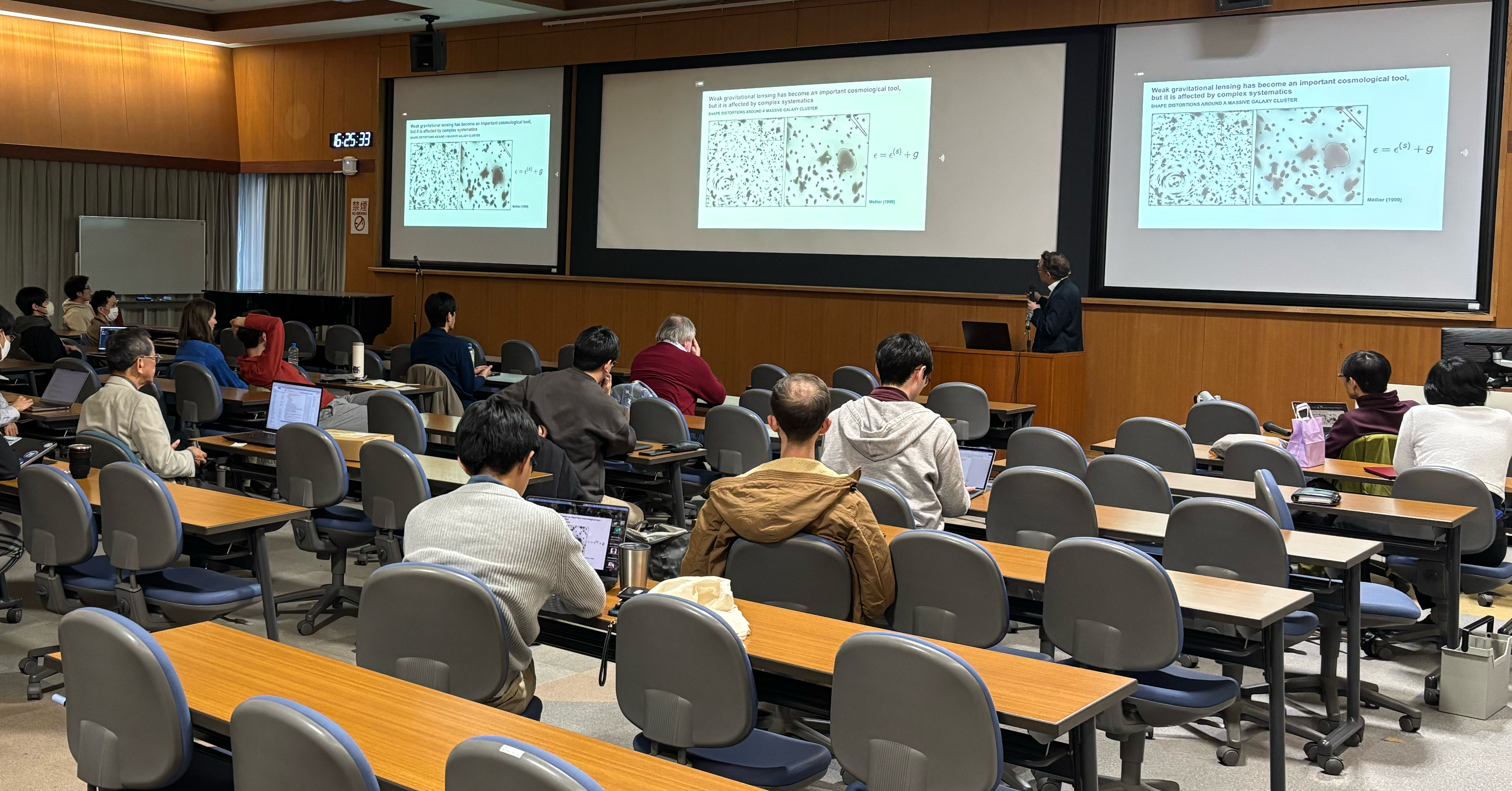Press Room
Press Room
International research conference entitled "Elucidating the Material Circulation in the Early Universe" was held on at the Komaba Campus of the University of Tokyo
In order to expand joint research between the National Institutes of Natural Sciences (NINS) and the Max Planck Institute for Astrophysics (MPA) in Garching, Germany, a NINS/AFP international research conference entitled "Elucidating the Material Circulation in the Early Universe" was held on March 10-12, 2025 at the Komaba Campus of the University of Tokyo, which also served as a symposium for the Division of Science, National Astronomical Observatory.
This workshop was attended by 51 people from five countries, including Professor Volker Springel, Scientific Director of the MPA and head of the institute's computational astrophysics division, a leading expert in magnetohydrodynamic simulations of galaxy formation, and Professor Nobert Langer, Director of the Argelander-Institut für Astronomie (AIfA) at the University of Bonn, who is renowned for his research on the physics and evolution of massive stars, particularly the final stages of supernovae, neutron stars, and black holes.
At this meeting, we summarized the latest distant universe observations and theoretical research on the formation of the first galaxies and stars, shared our current understanding and unsolved issues, and discussed paths to solving them.
For details, please refer to the website.

Subsequently, a joint research meeting between NINS and MPA was held at the National Astronomical Observatory of Japan's Mitaka Campus for two days from March 13 to 14, 2025.
The purpose of this meeting was to consider the specific content of joint research following the international conference at the Komaba Campus of the University of Tokyo, and 20 people from three countries participated. As a result of the discussion, it was decided to start several joint research projects, including research on the first stars and supernova explosions, and an investigation of global magnetic field structures by directly comparing galaxy formation models with radio observations.
For details, please refer to the website.


